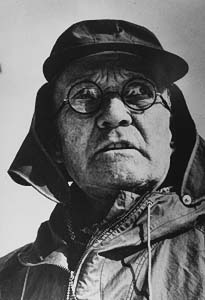 |
| Location of the U.S. Geological Survey Gaging Station at Farad, CA. Off Interstate route 80 |
The rates of flow known as "Floriston Rates" in the Truckee River Operating Agreement represent minimum flow rates that have to be met with water flowing from Lake Tahoe, any creeks tributary to the Truckee River and the several upstream reservoirs that impound water. A gaging station operated by the U.S. Geological Survey near Farad, CA (23 miles west of Reno, NV on interstate route 80) measures flow and provides upstream water managers with benchmark flow rates that change with the seasons. Florison rates vary between 300 cubic feet of water per second to 500 cubic feet of water per second, dependent in part upon the season. The rates, based on the federally established operating agreement, specify that average flow in the Truckee be 500 cubic feet per second between 1 March and 30 September. For the rest of the year (1 October to 28 February) average flows must be at least 400 cubic feet per second. These flows need to be maintained to meet the needs of downstream water users, including wildlife, farmers, municipalities and others. If water from natural flows and the system of reservoirs is not sufficient to meet these targets, the Truckee River Operating Agreement allows Lake Tahoe to be drawn down to meet needs if water levels in the lake permit this.
 Note that as of 31 March, the flow rates at the Farad gage were less than the target (500 cubic feet per second). Remember that the target is average flow, which means that sometimes flows can exceed or be less than the target.
Note that as of 31 March, the flow rates at the Farad gage were less than the target (500 cubic feet per second). Remember that the target is average flow, which means that sometimes flows can exceed or be less than the target.
If you have Google Earth on your computer try going to the location of the Farad gage to see where it lies in course of the Truckee River. The latitude and longitude of the station are Latitude 39°25'41", Longitude 120°01'59". If you zoom in enough and look carefully you can see a cable that runs from the station across the river. The cable is for a small cart that can be used to take measurements of flow as part of regular efforts to maintain the mathematical relationship used to estimate flow rates from stage height (called the "rating curve"). Given the importance of flow estimates from this gaging station, you can imagine that the U.S. Geological Survey checks the rating curve often and makes adjustments as needed.




